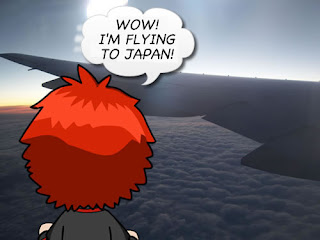 It's New Year's Eve and Tokyo is quiet as people have returned to their home towns to be with family. Tonight the country will be sitting in front of the TV watching Kohaku, the annual "Boys vs Girls" (boys in white, girls in red) sing off that has been running for, it would seem, ever. All the favourite singers and talento of the day join in an multi-hour extravaganza of a competition, wrapping up just before midnight as everyone switches over to watch the countdown on Jonny's Pop Show.
It's New Year's Eve and Tokyo is quiet as people have returned to their home towns to be with family. Tonight the country will be sitting in front of the TV watching Kohaku, the annual "Boys vs Girls" (boys in white, girls in red) sing off that has been running for, it would seem, ever. All the favourite singers and talento of the day join in an multi-hour extravaganza of a competition, wrapping up just before midnight as everyone switches over to watch the countdown on Jonny's Pop Show.
But there's an interesting aside for the name of Kohaku. The reason why the girls are in red and the boys are in white is that Kohaku is actually a stylised koi carp which is also red and white. Bred in the 1800's it's now featured in garden ponds the world over and each and everyone can be traced back to a gentleman by the name of Kunizo Hiroi who successfully mated the first pairing to an ornamental fish. But more impressively, single handedly invented the concept of an ornamental fish in its own right.
But as Kohaku closes, the camera will switch to a tolling bell, ringing in the New Year. And that's when everyone changes channel to the Jonny's party. A neighbour of mine, the lead guitar of a band known as "New Dawn" used to hangout here and we'd have beers on the balcony. He was a really nice guy and I never really knew what he did or who the band were. Until I saw him closing the show as the countdown sounded. I asked him later about why a famous guy like himself would sit and drink a glass with me (of all people) and he said that as I didn't know who he was he just felt like a regular guy. And he liked that. Happy New Year.
















































